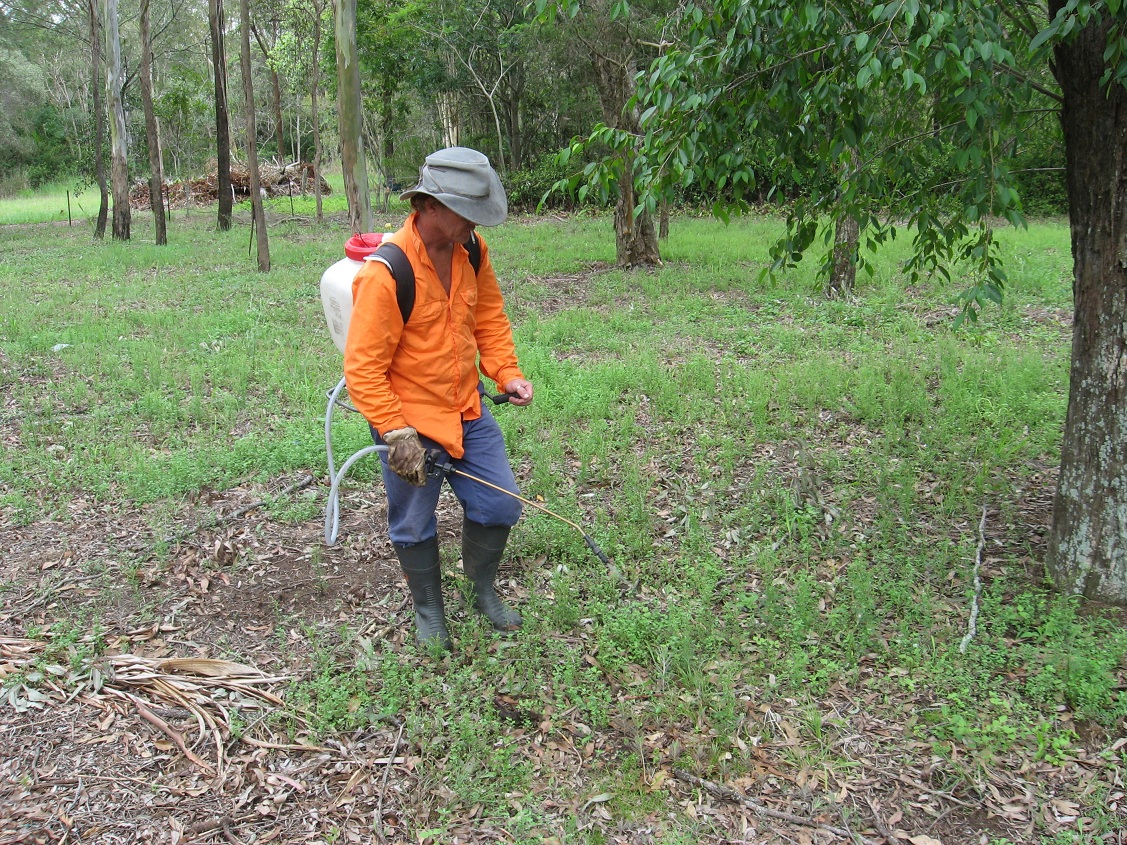
As professional horticulturists and landscapers, it’s essential to understand the pros and cons of using glyphosate in our industry. It’s the active ingredient in the popular herbicide Roundup, and the horticulture, agriculture and natural resource management sectors have used it to control weeds effectively and relatively safely for decades. However, despite its effectiveness in controlling weeds, its use has been the subject of much debate and controversy.
This won’t be a discussion where either side is favoured more than the other.
It’s a nuanced topic, and in this blog article, we’ll dive into the reasons for and against using glyphosate as a herbicide. We’ll explore the impact it has on the environment and human health, and its effectiveness as a weed killer. This article will provide a comprehensive overview for those in the horticulture and landscaping fields.

Glyphosate is good for spot-spraying various species of weed to prevent outcompeting desirable species, especially in difficult growing conditions where many weeds thrive. Image source
Arguments for the use of glyphosate:
- Effective weed control: Glyphosate is a highly effective herbicide that has been widely used for decades to control weeds in agriculture, forestry, and landscaping. It’s an efficient and cost-effective way to keep crops and other plants free of unwanted weeds.
- Safe(ish) to use: Technically nothing is truly safe to use, but CropLife Australia [1] states that global, science-based regulators, risk assessors, universities, and published research data overwhelmingly agree that glyphosate is relatively safe. The World Health Organisation rates it as a Carcinogen 2A, the same category as red meat [2].According to research from the Cambridge Journal of Weed Science [3], glyphosate does not persist in the environment due to its high water solubility. The article states that “glyphosate does not bioaccumulate in organisms” and that the use of glyphosate-resistant crops has reduced soil loss and decreased carbon dioxide emissions and fossil fuel use.
- Improved crop yields and quality: By controlling weeds, the use of glyphosate can lead to higher crop yields, which can result in greater food production and lower food prices for consumers. A $2.50 loaf of bread is only possible with glyphosate.
- Reduced tillage: Glyphosate allows for reduced tillage farming practices, which can result in soil conservation, reduced erosion, and improved soil health.
- Reduced use of harmful chemicals: By using glyphosate, farmers and landscapers can reduce the amount of harmful chemicals they use, which is better for the environment and for human health. Chemicals like 2,4-D were much more harmful than glyphosate and have rightly been banned in many countries around the world.
- Reduced labour costs and increased efficiency: The use of glyphosate can significantly reduce labour costs associated with manual weed control methods, such as hand weeding or mechanical cultivation.This means more natural habitat and landscape can be managed with less funding using glyphosate.
- Versatility: Glyphosate is a non-selective weed killer and can be used on a variety of weed species, making it a versatile tool for controlling them in a range of environments when compared with selective herbicides.
- Ease of use: Glyphosate is easy to apply using a wicking wand, backpack sprayer or mechanical sprayer, making it a convenient tool for weed management.
- Improved soil health: By controlling weeds, the use of glyphosate can improve soil health by reducing the amount of weed competition for nutrients and water.
Arguments against the use of glyphosate:
- Environmental harm and negative impacts to off-target species: Confusingly, glyphosate has also been reported as having a negative impact on the environment by affecting the health “beneficial” organisms. For example, it can affect the gut biota of bees [1]. While it doesn’t kill the bees directly, it isn’t helping them, either.
- Health concerns: There is growing evidence that glyphosate exposure may increase the risk of certain health problems, including cancer, birth defects, and endocrine disruption. The International Agency for Research on Cancer (IARC) concluded that there was strong evidence for genotoxicity, both for pure glyphosate and for glyphosate formulations, and that glyphosate is a probable carcinogen [4].In three American court cases, juries have awarded massive damages to people who blamed glyphosate for their cancer [5]. Additionally, there is research that suggests glyphosate may cause the gut dysbiosis by destroying healthy gut bacteria, promoting the growth of harmful microbes, and promoting antibiotic resistance in aggressive pathogens like Salmonella and E. coli [6]. One study also showed that chronic exposure to glyphosate could induce reproductive toxicity and decrease sperm quality [7].
- Resistance development: Overuse of glyphosate has led to the development of resistant weeds, also known as “super weeds”, which can result in the need for even more harmful chemicals to be used to control them.
- Alternatives exist: There are alternative weed control methods available, such as steam, ground covers, and landscape fabrics that can be used instead of glyphosate and are better for the environment and human health. There are natural desiccants, but they struggle to kill tap roots. It’s also important to note that steam and other alternatives can be expensive.
Conclusion
I’m not surprised if you didn’t find out whether glyphosate is “good” or “bad” in this article. This is a nuanced topic, and everyone will have their own opinion, but I hope that you now have the facts to make an educated decision for yourself about how much to expose yourself and your environment to.
Careful consideration of the potential negative impacts, as well as the availability (or lack thereof) of viable alternative methods, should be taken into account when deciding whether or not to use it.
And remember that planning for a weed-free garden is crucial during the design and construction phase to reduce weeds in ongoing maintenance.
